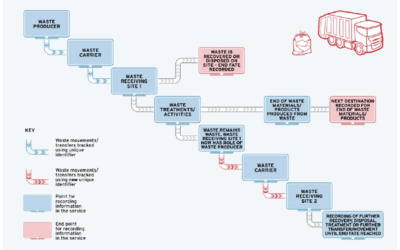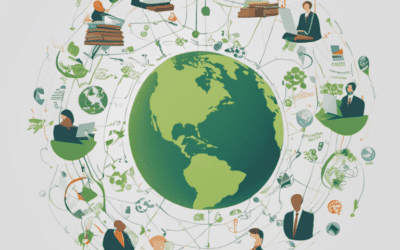Catch! Managing Scope 3 data capture for waste and recycling companies
How are you feeling about your Scope 3 emissions responsibilities? Waste and recycling companies who proactively and positively approach these requirements will put themselves in an ideal position to both contribute to a better environment and a healthier planet, and to gain commercial benefits from expanding their market presence.
Waste and recycling companies are ideally placed to make Scope 3 requirements work for them. In fact, they are in a unique position. For these companies, Scope 3 is a two-pronged issue. First, companies must apply Scope 3 requirements to the way they run their own businesses. And second, they must be able to support their clients to achieve the ‘waste generated in operations’ category 5. So this represents a clear opportunity for forward-thinking businesses in the sector.
What do you need to consider?
The GHG (Greenhouse Gas) Protocol Corporate Value Chain (Scope 3) Accounting and Reporting Standard sets out the method for managing GHG within value chain. We’d also recommend reading the Protocol’s supplementary technical guidance, which is clear and useful.
Essentially, Scope 3 is about understanding and calculating GHG emissions throughout your supply and value chain. Where Scope 1 and Scope 2 guidance is about what happens in your business, Scope 3 widens the net to include indirect emissions. There are 15 categories within Scope 3, all of which should be considered by companies measuring and managing Scope 3 issues:
- Purchased goods and services
- Capital goods
- Fuel- and energy-related activities not included in Scope 1 or Scope 2
- Upstream transportation and distribution
- Waste generated in operations
- Business travel
- Employee commuting
- Upstream leased assets
- Downstream transportation and distribution
- Processing of sold products
- Use of sold products
- End-of-life treatment for sold products
- Downstream leased assets
- Franchises
- Investments
This is a daunting list, and requires considerable focus in each area. It also requires the capability to collect the relevant data and use it to manage your reporting requirements. Measuring and managing Scope 3 data isn’t a one-off job – it’s an ongoing process, so the better tech set up you have to accurately administer your Scope 3 programme, the easier compliance and reporting will be.
Obviously, GHG emissions and approaches vary from company to company. So in each of these 15 areas, you need to list out what you currently do so you can measure your impact. From this benchmark you can set targets to reduce your emissions, and put in place reviews, measurement and reporting to make sure you are keeping track of progress and are able to demonstrate that progress to your stakeholders.
Documents like the supplementary technical guidance document mentioned above will help you understand:
- The activity data you need
- The emissions factors that apply
- The best way to collect your data
- The calculation formula
This is a serious and long-term project. And it’s something that, while legally applying to a certain category of businesses at the moment, is likely to be required for all businesses in the future. So the sooner you can build a plan and put the processes in place, the better placed you will be.
Supporting your own clients
In addition to meeting Scope 3 requirements for your own business, you also need to be able to support your clients as they meet their ‘waste generated in operations’ needs.
As a waste and recycling management business, you need to have the capability to demonstrate the work you do for your clients. This means you need to be able to offer services that support a reduction in GHG emissions associated with waste, and you need to be able to accurately record the work you manage for each individual client.
This will enable you to be able to provide clear reporting and analysis to your clients, allowing them to plan and measure their progress in this area. Having this capability gives you a clear commercial advantage and puts you in a position to be able to grow your business and increase your market reach.
Building your tech to boost your business
Managing both your own Scope 3 requirements and supporting your customers’ needs is only possible if you can accurately collect, manage and report all the data that comes into your business.
Many waste and recycling companies still operate a number of legacy software systems – our research with the Chartered Institute of Wastes Management suggest the average number of systems is between five and 12.
This will hamper your ability to manage these changes in your business. You need visibility across all your data, plus the ability to segment and focus that data to reflect your impact across all the Scope 3 categories, and by customer.
We need to move to a circular economy if we are to have a positive impact on current climate conditions. Scope 1, 2 and 3 requirements are part of this – encouraging businesses to reuse and recycle. And it represents a significant opportunity for waste and recycling companies, who can segment and sell materials on secondary markets, and provide the level of data reporting and support that their customers need.
If you’re wondering how to set up your business for Scope 3 success, talk to us about Waste & Recycling One. It’s a dedicated waste management tech solution for the industry that helps you to standardise, integrate, simplify and automate all your waste and recycling processes to create efficiencies throughout the business. WR1 delivers instant control and complete visibility across your entire waste management and recycling operations.






